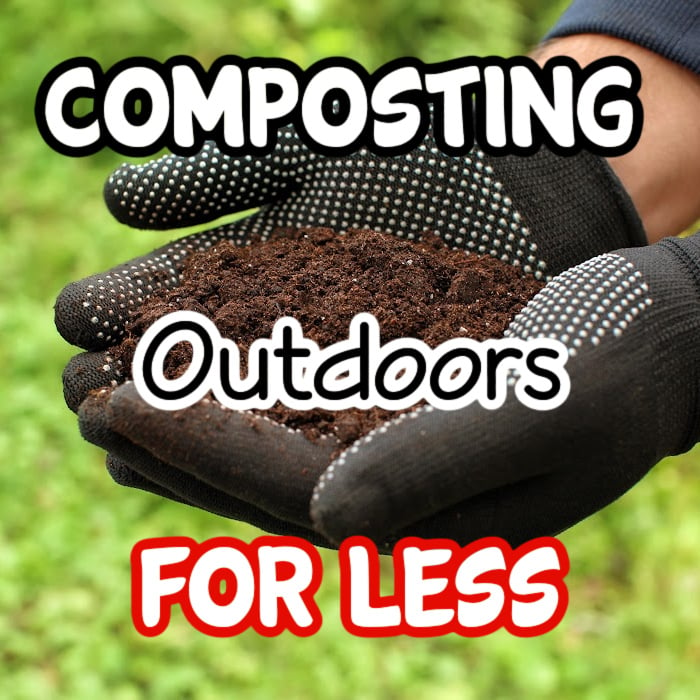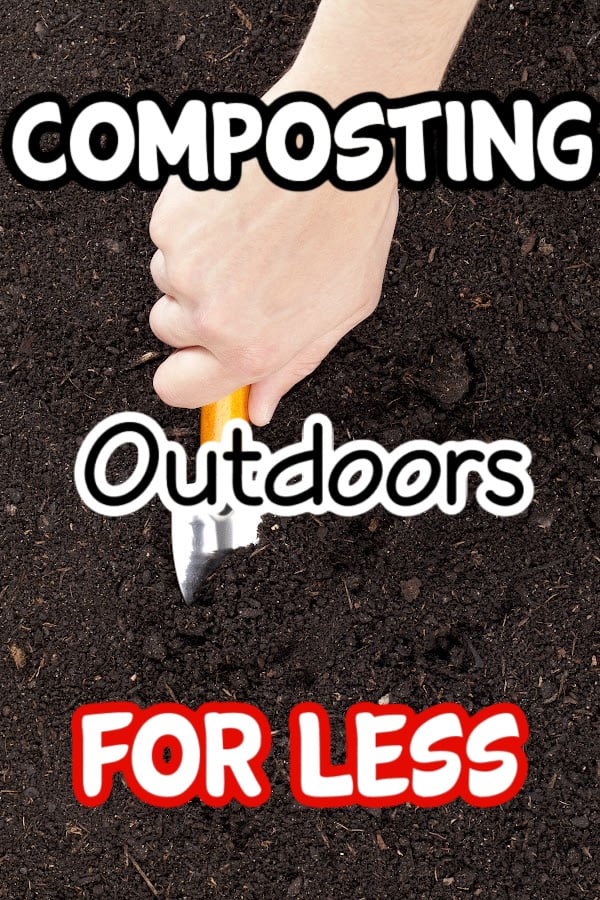
Composting is one of the cheapest ways to feed your flower and vegetable gardens. Not only can compost improve the rich soil health of your yard, but it also allows you to have a sustainable and greener approach to gardening.
Usually, the only thing you’ll have to spend money on when you start composting is a bin or backyard composting box to put your organic green items and compostable materials such as food scraps and grass clippings in. But did you know that there are even more frugal ways to do this?
Today, we’ll be talking about three of the cheapest ways to compost organic waste outdoors. Let’s get started!
Why Make Your Own Compost

Backyard composting is a popular practice among green gardeners. When you make your own compost, you help reduce landfill waste and even greenhouse gas emissions.
Furthermore, you can also reduce your dependence on fossil fuels and reduce your carbon footprint when you make compost at home. This is because homemade rich compost does not require the use of machinery to speed up the breakdown of organic materials, unlike commercially-available compost.
Given enough time, the natural cycle of decay produces a material that is rich in microorganisms and nutrients. This helps the plants in your garden grow strong, bear more fruit, and bloom lush flowers.
It also makes your garden soil richer, more aerated, and hold on better to moisture.
You Might Also Like: How to Amend Raised Garden Bed Soil For Growing Successfully

In other words, composting organic matter such as kitchen scraps and yard waste not only helps you reduce the waste you generate at home but also helps keep your garden happy and healthy.
Some other plant materials you can add to your backyard compost pile include:
- coffee grounds
- yard trimmings
- tea bags
- vegetable scraps
- kitchen waste
- dry leaves
- green leaves
- egg shells
- peat moss
- uncoated paper and cardboard
- egg shells
Cheap Ways to Create a Compost Bin

Composting in itself is a cost-effective way to feed your garden, and for some gardeners, the only additional cost is in acquiring a composting bin at the gardening store. However, you don’t have to spend a fortune just to get started on your compost bin.
Here are some of the cheapest ways to compost outdoors:
Plastic Storage Bins
These cheap and stackable plastic bins are an excellent choice for outdoor space composting. You can get them in a variety of sizes so that it can work for any yard space. Just make sure to drill holes for aeration.
- Choose your own bin (18 gallons is a good starting point). Make sure it has a tight-fitting lid.
- Drill holes 1-2 inches apart in the top 4-5 inches of your plastic compost bin all the way around
- Fill with compost (see below for what to add and not add)
- Aerate once or twice a week with a shake
- If it becomes too wet, add brown materials (see below)
Lidded Buckets

Another inexpensive and stackable option is to use 5-gallon buckets with lids. You can get them for cheap at the store, but you can also repurpose kitty litter containers or old paint buckets.
If there’s a bakery or a restaurant nearby your house, you can also ask for containers used for butter.
Wooden Crates and Pallets

You don’t always need an enclosed bin for backyard composting. If you prefer to use a compost heap, but you’re worried about it being unsightly, you can create a fence for it.
Using old wooden crates and pallets is a cheap and simple way to go about this.
Just build any containment size and shape you’d like and add brown and green nutrient-rich material, keep moist, and aerate once or twice a month.
You Might Also Like: Container Gardening Ideas

(I also use cinderblocks for this. No lid, and I think the blocks help with heating it up.)
Wanna go the absolute cheapest route? Just start a pile in an area of your backyard. Build it up to a point-ish pile, layer it with browns and greens and keep it moist and turn it about once a week.
This method may invite rodents or pests. If they spread it out a bit, just grab a rake and pull it back together. They’re spreading it out a bit helped aerate it anyway – so less turning for you. If you want to cover it with a tarp, that works, too, as it makes it heat up and work faster.
Outdoor Composting Tips

Regardless of the container you use, there are certain things you need to do to ensure the proper maintenance of your compost heap.
For starters, focus on using plant matters in your compost pile.
Do’s and Don’t add in composting:
Don’t use:
- meat
- bones
- dairy products
- pet waste
- ash from charcoal – fireplace ashes are fine as they aren’t filled with chemicals that can harm your plants
- weeds that have gone to seed
- black walnut products
- onions
- garlic
which can introduce harmful bacteria to your compost which will lessen your compost quality.
Place your good compost pile or bin in an easily-accessible part of your yard. If possible, choose an area that receives partial sunlight. The warmth can help speed up the decomposition natural process.
Layering is key when it comes to efficient composting.
Do’s
For every green layer of organic material like:
- food waste
- yard clippings
add twice as much brown material like:
- shredded paper products (non glossy)
- cardboard (non coated)
- coffee filters
- old newspapers(non glossy)
Don’t let food waste stay exposed since doing so can attract rodents and other creatures.
You can print your free composting guide below:

You Might Also Like: How To Keep Critters Out Of The Garden Without Harming Them

The general rules are to make sure to dampen every brown surface area and layer to make sure that your compost has enough water. This layer should be as moist as a damp sponge.
Finally, keep your compost pile well-aerated. Every week or so, turn over your compost with a shovel or a pitch fork.
You can also find gardening products I use in my videos here <---
I now have an Amazon Influencer’s storefront. I put the products I use, in my posts and Youtube Gardening videos, there. Shopping there is free and the site gets a percentage of sales. Thanks!
You can go to my storefront using this secure link <----
If you need seeds, this is the company I use <--- and if you use code: farmer1 at checkout, you'll get 10% off your order!



Leave a Reply